
Unhealthy Crawl Space
The original state of the crawl space beneath a home, depicting a scene of neglect and moisture-related issues. The lack of proper encapsulation and ventilation contributes to the unhealthy environment, posing potential risks to the structural integrity of the home and the health of its occupants.
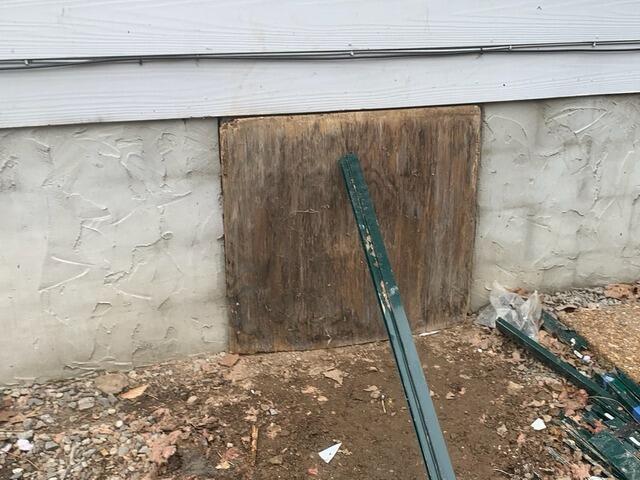
The Original Door
The original crawl space door, constructed from organic materials, and provides insight into the effects of time and environmental exposure. Over the years, organic materials such as wood or untreated metal are susceptible to deterioration in the crawl space environment. As organic materials degrade, they become increasingly vulnerable to structural weaknesses, compromising the integrity of the crawl space enclosure.
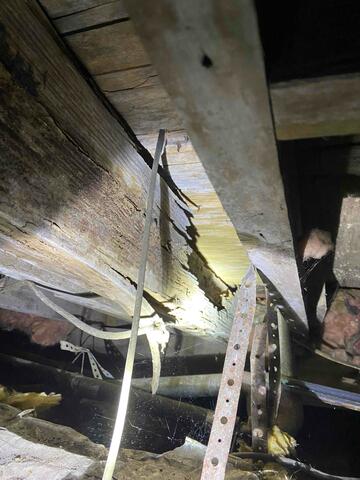
Damaged Wood
The damaged wood serves as a visual testament to the necessity of a foundation repair project. The deteriorated wooden beams and supports have been affected by moisture infiltration and structural instability. Cracks, warping, and signs of rot are prominently displayed, highlighting the urgent need for intervention.
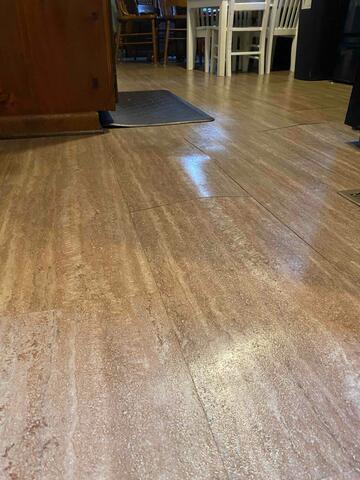
Sagging Floors
The home's interior afflicted by sagging floors, a common consequence of structural instability. Sagging floors can occur due to various factors, such as foundation settlement, inadequate structural support, or moisture-related damage. Over time, the underlying support structures weaken, causing the floorboards to sink and become uneven.
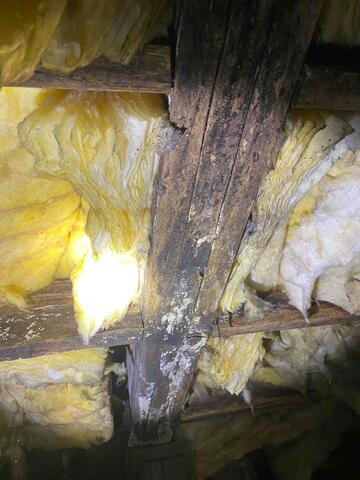
Mold Infestation on Wood Beams
A dense layer of mold growth covers the surface of the beams, showcasing the pervasive nature of fungal infestation in damp environments. The mold colonies appear as dark patches, spreading across the wood and compromising its structural integrity.
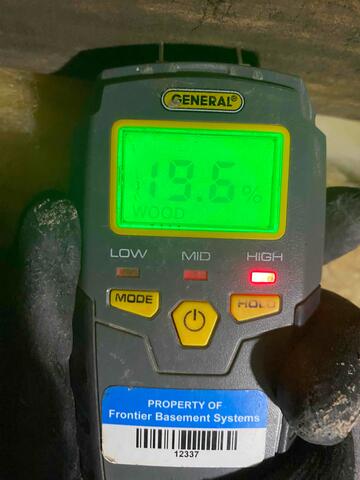
High Wood Moisture
Moisture meter reading displaying a high percentage of wood moisture at 19.6%. The elevated moisture levels depicted in the reading can lead to various issues such as wood rot, mold growth, and structural instability within the crawl space. However, encapsulating the crawl space can significantly mitigate these concerns. By installing a Clean Space Vapor Barrier and sealing off the crawl space from external moisture sources, encapsulation helps create a controlled environment with regulated humidity levels.
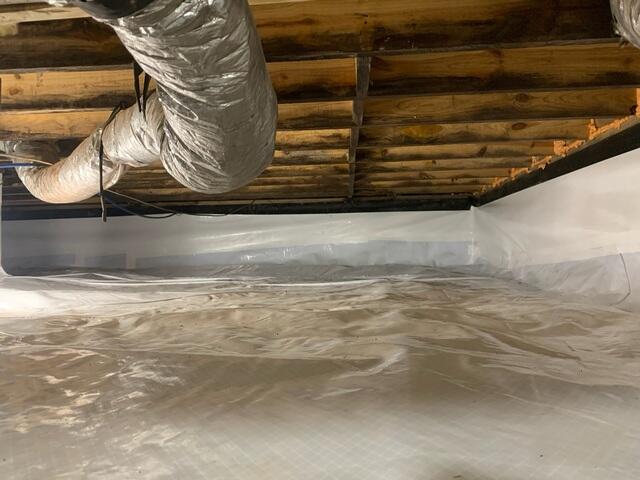
Encapsulation
The combination of the CleanSpace Liner and drainage matting serves as an effective moisture control system, reducing humidity levels and preventing moisture infiltration from the ground. By creating a barrier between the ground and the interior of the crawl space, this installation helps protect the structural integrity of the building and promotes a healthier indoor environment by minimizing the risk of mold growth and wood rot.

SmartJack Stabilizers
SmartJack Stabilizer, a structural support system is crafted from galvanized steel. Designed to address foundation settlement and sagging floors, the SmartJack Stabilizer provides essential reinforcement by lifting the affected areas back to their original positions. The galvanized steel construction ensures durability and longevity, making it resistant to corrosion and deterioration over time.

Completed Encapsulation and Foundation Repair
The crawl space encapsulation process is evident, with a durable vapor barrier covering the ground and walls, effectively sealing off the space from moisture and humidity. Additionally, structural reinforcements, such as SmartJack Stabilizers made from galvanized steel, have been installed to address foundation issues, ensuring stability and support for the entire structure.

New Everlast Door
The Everlast Door is constructed from 1/2 inch thick PVC plastic. The door is showcased for its airtight properties, designed to effectively seal off the crawl space from external elements. The durable PVC plastic material ensures longevity and resilience against environmental factors such as moisture and temperature fluctuations.
 4.9
4.9